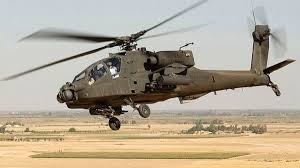After delay, India may get 1st batch of Apache choppers from US by July-end

India Set to Receive First Batch of Apache Helicopters from US by July-End
India is finally ready to welcome its first batch of AH-64E Apache attack helicopters from the United States by the end of July 2025. The delivery, delayed for more than a year, will boost the Indian Army’s air combat strength, especially along the western border with Pakistan.
Delay Ends With Arrival in Sight
India signed a deal in 2020 to purchase six Apache helicopters for the Army. These choppers were originally scheduled for delivery in mid-2024. However, global supply chain issues and technical delays pushed the timeline several times.
Officials have now confirmed that three helicopters will arrive by end of July. The remaining three are expected later this year. Once they land, the helicopters will undergo joint inspection and integration with the Army’s aviation unit.
What Makes the Apache Special?
The AH-64E Apache Guardian, built by Boeing, ranks among the most advanced attack helicopters worldwide. It can perform precise strikes in all weather and terrain conditions.
Each Apache carries:
- A 30 mm chain gun
- Hellfire missiles
- Hydra 70 rockets
It also comes equipped with Longbow radar, night-vision systems, and modern communication tools. These features allow the helicopter to track, lock, and destroy targets while staying linked with ground forces.
Deployment in Jodhpur: A Strategic Choice
The Indian Army will station these helicopters at its 451 Aviation Squadron in Jodhpur, Rajasthan. This unit is close to the Pakistan border and plays a key role in surveillance and combat readiness.
Positioning the Apaches here gives the Army a fast-response tool. The helicopters will enhance firepower in the region, supporting troops in high-risk zones and enabling quick retaliation during cross-border incidents.
Indian Army Gains Independent Air Power
This marks the first time the Indian Army will operate Apache helicopters. The Indian Air Force already has 22 Apache units, inducted between 2019 and 2020. The Army’s use of Apaches allows it to conduct independent air-ground operations without relying on the Air Force.
Army officials plan to use the Apaches for reconnaissance, ground support, and tactical strikes. Their ability to operate at night and in tough conditions makes them a powerful asset in both offensive and defensive roles.
Modernization Efforts on Track
The Apache induction reflects India’s ongoing push to modernize its military forces. In addition to buying cutting-edge equipment, the country continues to invest in local production through the Make in India initiative.
The deal with the US includes training, weapons, maintenance, and logistical support. Indian pilots and technicians have already completed training in the US. Ground infrastructure in Jodhpur is also ready to support Apache operations.
Despite the delay, military officials say training and prep work stayed on track. The Army is fully prepared to deploy the helicopters as soon as they arrive.
Rising Security Needs Prompt Action
India’s decision to enhance its helicopter fleet comes at a time of growing security challenges. Border tensions with Pakistan continue, and India also faces threats in the north from China. Recent operations like Operation Sindoor highlighted the need for better air support and surveillance.
Apache helicopters give India an edge in such scenarios. They can strike fast, provide support to ground troops, and gather real-time intelligence. Their presence also sends a strong message of deterrence.
Stronger India-US Defense Ties
This delivery reflects the deepening defense ties between India and the United States. Over the past few years, both countries have conducted joint military exercises and signed several key defense agreements.
The Apache deal is one of many recent purchases from the US. India has also acquired Chinook helicopters, surveillance drones, and air defense systems from American firms. These platforms improve India’s strategic reach and interoperability with friendly forces.
Conclusion
India’s wait for the Apache helicopters is finally ending. Their arrival by the end of July marks a turning point in the Army’s combat readiness. With three helicopters landing this month and three more to follow, the Army will soon operate one of the world’s most advanced attack chopper fleets.
Stationed in Jodhpur, these machines will serve as a force multiplier. They bring speed, firepower, and intelligence-gathering capabilities to one of the country’s most sensitive regions. As India continues to modernize its forces, the Apache induction is a bold step toward stronger, faster, and smarter defense.






